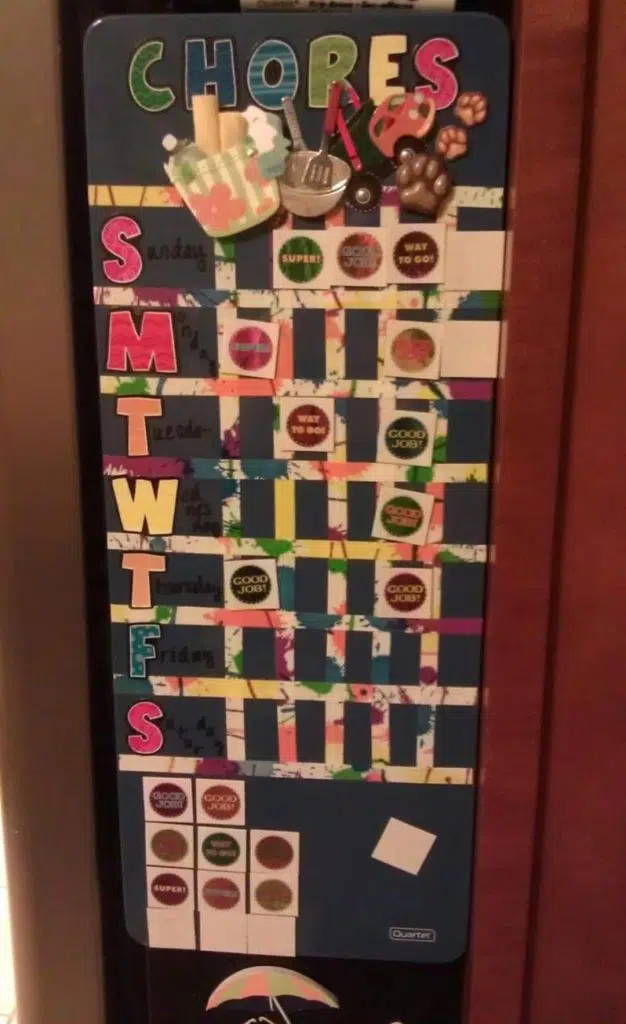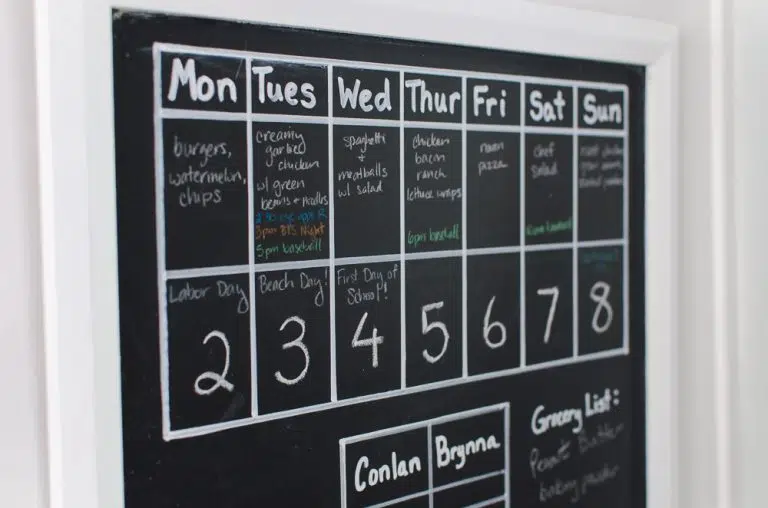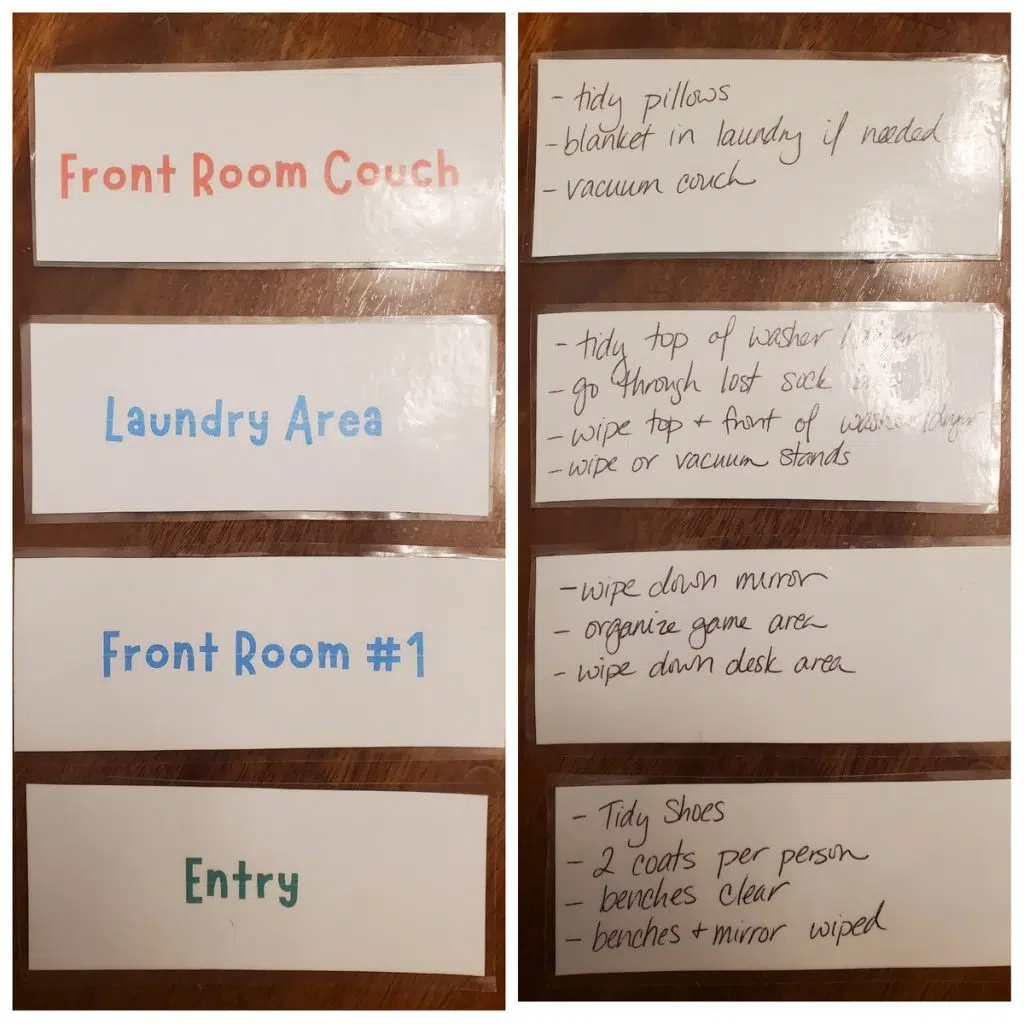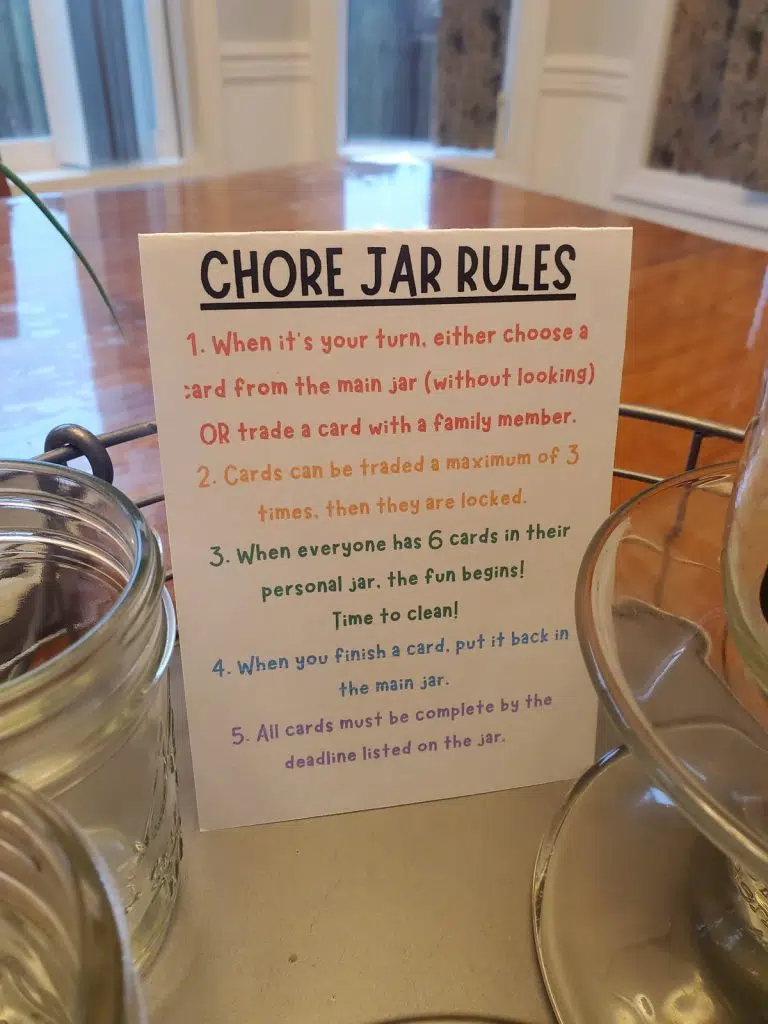I’m a huge advocate for having children do household chores. Chores curb entitlement, help kids develop valuable life skills, and make them feel like contributing members of the family.
That being said, I fully understand why some families don’t implement chores. For one, implementing a chore system is way more work for mom on the front end. Assigning chores, teaching kids how to do them properly, monitoring whether they’ve actually done them, inspecting them for completeness, coaching them to improve when they’re not done well, and enforcing non-compliance takes up a lot more time and emotional energy than just doing the chores yourself.
Other families avoid chores as a matter of principle. For example, they don’t want to infringe on their kids’ carefree childhood with “adult” responsibilities, their kids are busy with school/sports/activities and they think they’re already overburdened, or the parents find deep meaning and satisfaction in serving and caring for their families and not making them share the responsibility of household chores.
Chores have been a huge battle in my house. But it’s not because I get resistance from my family. It’s because I’m a terrible housekeeper.
I’ve worked hard to improve. And I have. But things just don’t come easily to me. I struggle to develop effective routines and schedules and techniques. Everything takes me far more time than it’s “supposed” to. I don’t know why it’s hard for me, but it’s been one of my biggest struggles as an adult.
And I don’t want my kids to struggle with the same, so I’ve made it a priority for them to do chores so they can develop the valuable life skills they’ll need to maintain their own households some day. But, I’m sad to report, my efforts have failed miserably.
Until recently.
A few weeks ago, a memory popped up from ten years ago to flaunt the fact that I’ve been fighting this battle for a decade. It was a daily magnetized chore chart to track my kiddo’s contributions to the home.

Credit: Kristina Slaney
THE PROS:
I tried.
He thought it was fun.
He did some chores.
THE CONS:
I didn’t keep up with it.
Funny enough, shortly thereafter another chore chart attempt popped up in my memories. This one is actually still in use in our house today, but wasn’t nearly the perfect solution I hoped it would be.

Credit: Kristina Slaney
THE PROS:
I tried.
The kids bought into the system.
They did some chores.
THE CONS:
I didn’t keep up with it.
Are you sensing a theme? Keeping up with a structured system just doesn’t work well in our family – especially when we’re busy on the weekends and weeknights are unpredictable because we may or may not be running to an activity or sporting event.
But there was one chore that we’ve always nailed in our house. And that’s laundry. Starting around age 7, both of my kids have been fully responsible for their laundry. And there’s nothing for me to manage, because it’s all them. The natural consequence of not doing it is – you run out of pants. It’s nobody’s fault but your own, and nobody else suffers but you.
Contrast this with failing to do a traditional chore (like clean up after dinner) and we all suffer with a dirty table and messy kitchen.
So the search continued to develop a chore system that worked with our family. I wanted something more structured than just asking them to pitch in as needed, but more flexible than a daily list of responsibilities I had to remember to enforce.
AND I’VE FOUND IT. I’ve found a system that gives my kids both responsibility and autonomy. It makes our whole family (not just the parents) responsible for keeping up our home. It makes us feel like a team. It teaches the kids what’s involved in maintaining a home. And it even helps them do it properly without a parent’s constant coaching.
Even better, it’s flexible enough that I’ve been able to keep it up for a few months now. Is my home company-ready all the time? No – and it will never be. But is it at least in good enough condition? Yup. And that makes me happy.
Here’s the system we’ve been using:

Credit: Kristina Slaney
- I made up 24 chore cards; since there are 4 people in our family each person gets assigned 6 cards. (I laminated these so they’ll hold up longer.)
- Each card has the area of responsibility on the front (i.e., “Front Room” or “Doorknobs”) and the back has a detailed checklist of all the tasks expected to complete that card.

Credit: Kristina Slaney
- On Mondays during dinner, we “deal” the cards out so each family member gets 6. Then we can negotiate trades amongst each other. Sometimes we do it more like a white elephant gift exchange where people pick a chore card from the jar or can even “steal” a chore card from someone else’s pile. This part is pretty fun!

Credit: Kristina Slaney
- I assign a due date (usually Sunday). Everyone can complete their chores on their own timeframe. Sometimes the kids will do 1-2 a day. Sometimes we all wait until the last minute and spend a couple of hours knocking out all our chore cards at once.
- Once a card is finished, it goes back in the main jar.
One thing I love about this is that I can make adjustments as our family needs them. For example, I can lighten their load during a busy week by excusing a chore or two (after all, the baseboards don’t need to be dusted every week.) I can extend the due date if we’re all falling behind. And I can ask that they do one of their chores early in the week if I need it done – but mama doesn’t have to be the one who always does it.
So now, as it stands, my kids have three types of chores:
The “you-do’s”: These are things the kids are 100% responsible for, like laundry and cleaning their room. If they don’t do them, they’re the ones who suffer the consequences – but mom is hands-off in this department.
The “may-do’s”: These are listed on our weekly chore chart and assigned to each child by day. If I need someone to set the table, clean up after dinner, or sweep, I’ll call on the person who’s been designated for that day. But this isn’t a traditional chore chart in the sense that I’ll “police” whether or not they’ve done it. It just helps me know which kid to ask on which day if a certain task needs to be done.
The “must-do’s”: These are the tasks listed on our chore cards and divided up into our individual chore jars. It helps with the regular cleaning maintenance that needs to be done.
If you’ve been struggling to develop a chore system for your family, stop looking for a one-size-fits-all solution if you can’t find one that works for you. Every family is different with different schedules, different needs, and different expectations of participation. This system and combination has finally worked for us.
What works (or doesn’t work) for you?
PIN THIS!
 Read more of Kristina’s contributions to AllMomDoes here.
Read more of Kristina’s contributions to AllMomDoes here.












